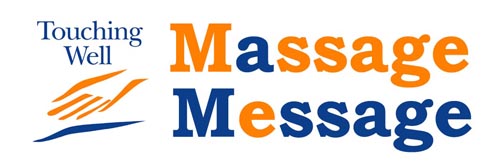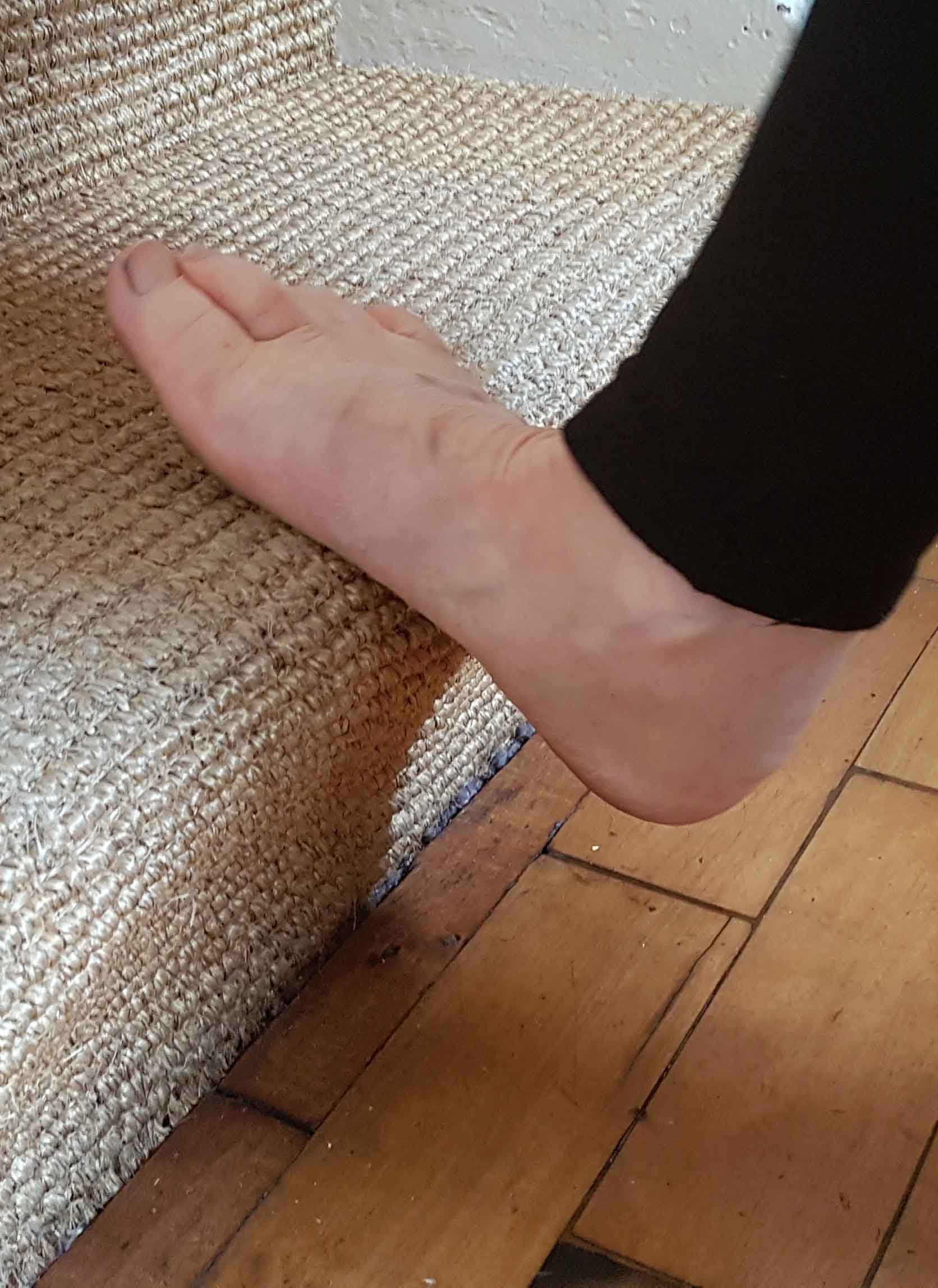| Back to Back Issues Page |
 |
|
Touching Well E Newsletter Massage Message 33 - November 2020 November 23, 2020 |
What is new at Touching Well
After an unusual time in lock-down, I started to see clients again as soon as I was allowed to. I was so happy to see them. With my visor it felt at times as if I was looking through one of those circus mirrors, everything looks a bit distorted and misty. This, plus the face coverings, is a small price to pay for being able to treat clients safely. Now we are in the second lock-down, where I am allowed to treat clients for medical conditions. I have written a Corona Virus Prevention Policy , in line with government advice. All clients have to complete a Corona Virus Screening form before they come for their first treatment (back).
First one back I was very lucky to get the first appointment with Regina after lock-down ended. As always she puts you at ease with her warmth and professionalism. I was totally reassured by all the extra measures in place, and the new sheets on the bed are super crisp and clean. Importantly it still felt like a usual visit and not too clinical. Regina is very flexible and whatever measures you want she can accommodate. A lovely new touch is individual towels in the toilet! Like a luxury spa. A good massage was exactly what I needed after several stressful months and it is so important at this time to take care of yourself. We are worth it!
I have spent the first lock-down putting a series of stretches together, since massage was not possible. They have now found a permanent home on the Touching Well website, ordered by part of the body to be stretched.
Seven amazing things about our sense of touch On the BBC were a series of programmes about touch, presented by Claudia Hammond. "Don’t underestimate the power of touch. It can convey emotion faster than words. It can affect how we feel, who we like and dislike, and even what we buy. In contemporary society some people feel starved of touch while others feel that we touch too often." "Claudia Hammond looks at the neuroscience behind our sense of touch. Why does a gentle touch from a loved one make us feel good? This is a question that neuroscientists have been exploring since the late 1990's, following the discovery of a special class of nerve fibres in the skin. There seems to be a neurological system dedicated to sensing and processing the gentle stroking you might receive from a parent or lover or friend, or that a monkey might receive from another grooming it. Claudia talks to neuroscientists Victoria Abraira, Rebecca Bohme, Katerina Fotopoulou and Francis McGlone who all investigate our sense of emotional touch, and she hears from Ian Waterman who lost his sense of touch at the age of eighteen." Massage helps with depression
People with depression tend to have quite a few physical as well as psychological symptoms, in particular anhedonia. This was a new word for me, it is an inability to feel pleasure. A German team developed a massage sequence that simulated the afferent C fibres (mentioned on p.2) incorporating slow gentle strokes (3-10 cm a second). They compared this sequence with relaxation in 57 outpatients with depression. They had four weekly sessions of either relaxation or massage. The participants were assessed with various questionnaires and an interview about the effect of the intervention. Massage had much better outcomes than the relaxation sessions. The researchers suggest that stimulating the C fibres, thought to specialise in comforting touch, could increase the ability to feel pleasure. (Brain Sci. 2020 Sep 26;10(10)). Studies have shown that stroking yourself with slow gentle strokes is lovely, but it does not stimulate the afferent C fibres in the same way. If you are lacking touch by another person, exercise can be a substitute. (The science of affectionate touch (BBC, 8 Oct 2020)). There are quite a few studies showing that massage helps with psychological well-being, from calming anxiety to lifting depression. A recent meta-analysis showed that massage reduces anxiety and depression in pregnant women (compared with usual care). (Midwifery. 2020 Nov;90:102818).
Five minutes MFR on neck releases stress A study looked at whether myofascial release (MFR) of the muscles between the first and second vertebra (suboccipital) could relieve stress. We have looked at a previous Massage Message (May 2015) at this set of four muscles and their importance in regulating head position. My osteopath mentioned that tension in this area can contribute to sleep problems (he gave a physiological explanation, but I was too relaxed to take it in). Forty women in the clothing industry were taken away from their work. Fifteen rested for five minutes, twenty five were given a five minute MFR session of the suboccipital muscles. The researchers looked at cortisol levels in the saliva as an indicator for stress. The cortisol levels were reduced in both groups, but much more so in the myofascial release group. This study shows two things, firstly, five minutes away from work did reduce the stress level, and secondly, as little of five minutes MFR can make a big difference. (J Can Chiropr Assoc. 2020 Aug;64(2):109-118).
Massage for musicians While music is often relaxing to listen to, playing an instrument can cause physical tension and pain for musicians, mainly in the upper body. A study looked at preventing and/or easing these problems using chair massage or exercise. Forty-four music students were divided into three groups, chair massage, exercise and control. The students in the massage and exercise groups had eight fifteen minute sessions within four weeks. All students had a questionnaire and their muscle tension was assessed using an algometer at the beginning and at regular intervals. Health problems associated with playing an instrument was reported by 86.4% of the participants. The pain threshold decreased after each session, but more so for the massage group. From the forth session onwards the benefits were particularly marked. Chair massage and exercise help to decrease discomfort in musicians, and significant results were seen after two weeks. (Int J Environ Res Public Health. 2020 Jul 16;17(14)).
Massage lowers blood pressure Essential or primary hypertension is raised blood pressure (higher than 140/90 mm Hg) that has no known cause. This applies to about 85% of people with raised blood pressure (BP). A study looked at how foot or back massage would influence BP and sleep quality in women with primary hypertension. 90 women were included, 30 in the control group, 30 received foot massage and 30 received back massage half an hour twice a week for three weeks. They also completed questionnaires and their BP was taken before and after each session. Massage did reduce the blood pressure and improved the quality of sleep. (J Hum Hypertens. 2020 Jul 16).
Foot massage for ankle instability Many of us have sprained an ankle in the past. Isn’t it unfortunate that, if it happens again, it tends to happen on the same foot? The reason could be that one ankle is less stable due to the previous injury, which could be a chronic condition. A review evaluated if massage of the sole of the foot improves ankle stability. They found three studies, and indeed, planar massage improved chronic ankle stability. The reason for this is thought to be that it improves sensation within the tissue, thus helping with the balance, and it also increases movement. (J Sport Rehabil. 2020 Oct 7:1-5). Ankle stability is important not only in terms ease of movement, but also in injury and fall prevention. Here is a way of releasing the sole of your foot (plantar fascia) on your very own stairs. "Scrape" the arch of your foot on the edge of the bottom step to ease the fascia on the sole of your foot. Do this very slowly and deliberately. Pause where you feel tenderness, and wait. Perhaps wriggle your toes after a little while. You can also slightly shift your weight, for example, bend your knee a little more, and thus flex your ankle. You can also do this on the outside of your foot. And of course on the other foot.

There are also a couple of other recent studies showing the positive effects of foot massage: it reduces nausea, vomiting & retching on patients undergoing chemotherapy (J Caring Sci. 2020 Aug 18;9(3):120-124), and it decreases the pain intensity related to the change of position in unconscious trauma patients in intensive care. (Bull Emerg Trauma. 2020 Jul;8(3):156-162).
Aromatherapy relieves anxiety A study of studies (meta-analysis) looked at the effect of aromatherapy on anxiety. They searched databases of scientific publications and found thirty two trials (35 scientific publications) on the subject (there were a few in previous Massage Messages). The results, taken together from these studies, showed that inhalation and massage aromatherapy significantly decreased anxiety levels in different conditions. None of the studies mentioned any side effects. (J Affect Disord. 2020 Sep 1;274:1028-1040). Aromatherapy can help to decrease anxiety and help with labour pain found another recently published meta-analysis (Ethiop J Health Sci. 2020 May;30(3):449-458).
Preventing lymphoedema after hysterectomy Women can get lymphoedema after cancer treatment. This is true for breast cancer, where the oedema tends to be in the arm and for gynaecological cancers, where the oedema often manifests in the legs. Removal of lymph glands increases the risk of developing oedema. A study looked at prevention of leg lymphoedema after a radical hysterectomy (removing of the womb and surrounding tissues, including the fallopian tubes, part of the vagina, ovaries, lymph glands and fatty tissue) for cancer of the cervix. One hundred and twenty women were randomly assigned to an intervention or control group (60 in each group) after their radical hysterectomy. The intervention consisted of manual lymph drainage (MLD), compression hosiery, regular exercise and health education. The women in the control group received health education only. The researchers were interested in how many women developed lymphoedema. Of the 117 women completing the study one year post surgery, 28 developed lymphoedema, 20 in the control group, 8 in the treatment group, a significant difference. Also, the lymphoedema was less severe in the women who received lymphoedema therapy throughout the year.(Int J Gynecol Cancer. 2020 Jun;30(6):757-763).
Leg oedema and the heart When I see clients with heart issues and oedema in my practice, I am treating them very cautiously. The reason is that the heart might “park” fluid in the legs, otherwise it could be overwhelmed. A review looked at this cautious practice and found that some treatment for oedema (even if that oedema is caused by the heart) does not affect the heart negatively. MLD and compression (multilayer bandaging or hosiery) with moderate strength had, if anything, only transient effect on the heart while decreasing oedema. More research is needed to find out if strong compression is also a potential treatment for people with chronic heart failure and oedema. (ESC Heart Fail. 2020 Oct;7(5):2012-2020).
Wishing you a spring in your step,
Regina
Issue 33 of the Massage Message: November 2020 2020.
|
| Back to Back Issues Page |